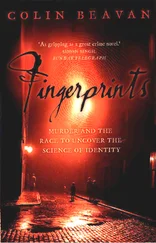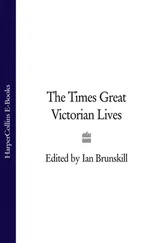Dickens wrote an essay about this: 'The Demeanour of Murderers',
House-hold Words,
14 June 1856.
88
Even before Whicher's arrival . . . previous day's
Daily Telegraph. Letters quoted in the
Bristol Daily Post
of 12 July 1860 and the
Somerset and Wilts Journal
of 14 July 1860.
88
A bump behind the ear . . . the seat of secretiveness.
From the 1853 edition of George Combe's
System of Phrenology.
88
This was probably the same. . . a tiger from a sheep.'
Letter quoted in the
Somerset and Wilts Journal
of 14 July 1860.
CHAPTER 7
91
The warm weather . . . eclipse of the sun.
From the
Frome Times,
25 July 1860.
91
an odd episode that had taken place four years earlier, in July 1856.
Account of the runaways episode of July 1856 from Whicher's reports to Mayne in MEPO 3/61, Stapleton's
The Great Crime of 1860
and local newspaper stories.
92
In one newspaper . . . sister's affection.'
Probably the
Bath Express
- the piece was reproduced, without attribution, in the
Frome Times
of 25 July 1860 and the
Devizes Advertiser
of 26 July 1860.
93
Another report . . . at the side'. Bath and Cheltenham Gazette,
23 July 1856.
93
'The little girl . . . mode of sitting.'
In the piece reproduced in the
Frome Times
of 25 July 1860.
93
Emma Moody, fifteen . . . wool workers.
From the census of 1861.
94
'I have heard her say . . . just the contrary.'
This dialogue is reconstructed from Emma Moody's testimony at the magistrates' court on 27 July 1860.
94
According to Whicher's reports . . . in my place?'
From report in MEPO 3/61.
96
'wonted sagacity'.
From a report in
The Times
on 23 July 1860;
'knowledge and sagacity'.
From a letter by Dickens of 1852;
'vulpine sagacity'.
From 'Circumstantial Evidence' in
Experiences of a Real Detective
(1862) by Inspector 'F', edited by Waters.
96
'sleuthhound'.
In
Shirley
(1849).
96
'the chase was hot . . . upon the right track'.
From
Recollections of a Detective Police-Officer
(1856) by Waters.
96
'If any profession . . . ridding society of pests.'
In
The Casebook of a Victorian Detective.
96
'a vast Wood . . . being discovered.'
From
An Enquiry into the Causes of the Late Increase of Robbers
(1757), quoted in
The English Police: A Political and Social History
(1991) by Clive Emsley.
97
In 1847. . . hummingbird skins.
From reports in
The Times,
9, 15 & 19 April 1847 and 14 October 1848.
97
Jack Hawkshaw . . . all his skins.'
'You detectives,' observes another character in the play, 'would suspect your own fathers.'
The Ticket-of-Leave Man
was first performed at the Olympic Theatre in Drury Lane, London, in May 1863, and proved a huge success.
CHAPTER 8
99
'At the back of the house. . . very accessible.'
From testimony given on 1 October 1860, reported in the
Bristol Daily Post.
100
Before Whicher's arrival . . . seen traces.'
Testimony of Francis Wolfe on 2 October 1860, reported in the
Bristol Daily Post.
100
'An intimate personal knowledge . . . village boys'.
From the
Somerset and Wilts Journal,
13 October 1860.
103
'I contrived to elicit . . . very suggestive.'
From 'Circumstantial Evidence' in
Experiences of a Real Detective
(1862) by Inspector 'F', edited by Waters.
103
'In both we are concerned . . . detective devices.'
From
Psycho-Analysis and the Establishment of the Facts in Legal Proceedings
(1906) by Sigmund Freud.
104
Smith was a Glasgow architect's daughter . . . hot chocolate.
See
The Trial of Madeleine Smith
(1905), edited by A. Duncan Smith. Henry James quoted in 'To Meet Miss Madeleine Smith' in
Mainly Murder
(1937) by William Roughead.
105
a kind of heroine.
In
Latter-day Pamphlets
(1850) by Thomas Carlyle.
106
The dizzying expansion . . . by 1860.
Figures on newspaper readership from
Black Swine in the Sewers of Hampstead
(1988) by Thomas Boyle. The expansion of the press was fuelled by the repeal of the stamp tax in 1855, which ushered in the first penny newspapers the next year, and the repeal of the duty on paper in 1860.
106
The tailor had educated himself . . . do the same.
Whereas Dr Kahn's anatomical museum was open only to gentlemen, according to advertisements in
The Times,
literate members of both sexes could read the newspapers.
107
In answer to their questions . . . William to go with me.'
From notes taken by the lawyer Peter Edlin, who was present at the interview, and passed on to the author Cecil Street, who published
The Case of Constance Kent
(1928) under the pen name John Rhode. These and other papers about the case are in an archive assembled by Bernard Taylor, the author of
Cruelly Murdered: Constance Kent and the Killing at Road Hill House
(1979, revised 1989).
107
As the week wore on. . . body was found.
A partly accurate version of the rumour was reported in the
Somerset and Wilts Journal
of 21 July 1860.
107
In the evening of Saturday, 30 June . . . wicks needed trimming.
From testimony given by Samuel Kent, Foley, Urch and Heritage in the magistrates' court in October and November 1860.
109
'Every Englishman . . . closed to the world.'
In
Notes on England
(1872).
109
Privacy had become . . . or a tea.
For discussions of middle-class domestic life in Victorian England see, for instance,
Family Fortunes: Men and Women of the English Middle Class 1780-1850(1987)
by Leonore Davidoff and Catherine Hall,
The Spectacle of Intimacy: A Public Life for the Victorian Family
(2000) by Karen Chase and Michael Levenson, and
The Victorian Family: Structures and Stresses
(1978), edited by A. Wohl. In an essay in this anthology, Elaine Showalter writes that secrecy was 'the fundamental and enabling condition of middle-class life . . . The essential unknowability of each individual, and society's collaboration in the maintenance of a facade behind which lurked innumerable mysteries, were the themes which preoccupied many mid-century novelists.'
In 1935 the German philosopher Walter Benjamin connected this new privacy to the birth of detective fiction: 'For the private citizen the space in which he lives enters for the first time into contrast with the one of daily work . . . the traces of the inhabitant impress themselves upon the
interieur
and from them is born the detective story, which goes after these traces.' Quoted (and translated) by Stefano Tani in
The Doomed Detective: The Contribution of the Detective Novel to Postmodern American and Italian Fiction
Читать дальше












